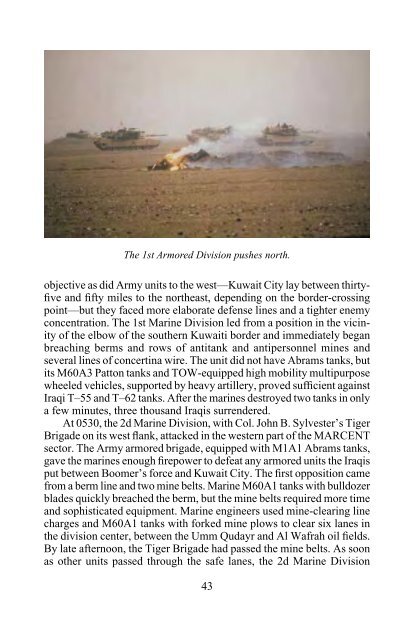Create successful ePaper yourself
Turn your PDF publications into a flip-book with our unique Google optimized e-Paper software.
The 1st Armored Division pushes north.objective as did Army units to the west—Kuwait City lay between thirtyfiveand fifty miles to the northeast, depending on the border-crossingpoint—but they faced more elaborate defense lines and a tighter enemyconcentration. The 1st Marine Division led from a position in the vicinityof the elbow of the southern Kuwaiti border and immediately beganbreaching berms and rows of antitank and antipersonnel mines andseveral lines of concertina wire. The unit did not have Abrams tanks, butits M60A3 Patton tanks and TOW-equipped high mobility multipurposewheeled vehicles, supported by heavy artillery, proved sufficient againstIraqi T–55 and T–62 tanks. After the marines destroyed two tanks in onlya few minutes, three thousand Iraqis surrendered.At 0530, the 2d Marine Division, with Col. John B. Sylvester’s TigerBrigade on its west flank, attacked in the western part of the MARCENTsector. The Army armored brigade, equipped with M1A1 Abrams tanks,gave the marines enough firepower to defeat any armored units the Iraqisput between Boomer’s force and Kuwait City. The first opposition camefrom a berm line and two mine belts. Marine M60A1 tanks with bulldozerblades quickly breached the berm, but the mine belts required more timeand sophisticated equipment. Marine engineers used mine-clearing linecharges and M60A1 tanks with forked mine plows to clear six lanes inthe division center, between the Umm Qudayr and Al Wafrah oil fields.By late afternoon, the Tiger Brigade had passed the mine belts. As soonas other units passed through the safe lanes, the 2d Marine Division43












